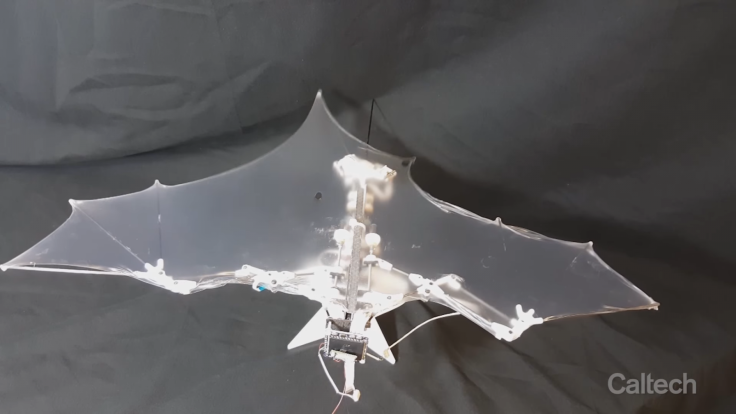Bat Bot rises: Engineers create winged robotic drone that flies like a bat
Intricate wing design lets the drone dive and bank sharply like a real bat.
Robotics engineers have built a unique type of drone that resembles a bat, using wings to fly that allow it to more easily manoeuvre around and avoid objects. Called Bat Bot, the lightweight drone flies without the use of blades, which its creators say makes it more suited to working in close confines with humans.
Bat Bot has been developed by scientists at the California Institute of Technology (Caltech) and University of Illinois at Urbana-Champaign (UIUC). To create the drone, the team first had to "reverse-engineer" the biological characteristics of a bat's wings so that they could accurately replicate its movement during flight. They then constructed a set of wings using carbon-fibre tubes and then stretched a highly flexible, silicone-based membrane over them.
The wings are controlled through a series of motors and actuators that are capable of precisely controlling their movement, giving it the agility to dive and bank sharply, much like a real bat. When Bat Bot lifts its wings, the membranes fill up with air and deform. This air is expelled at the end of each downward motion to give the drone propulsion.
A series of intricate joins in Bat Bot's wings make it capable of altering its wing shape by flexing, extending, and twisting its shoulders, elbows, wrists, and legs. The whole drone only weights 93g and has a wingspan of approximately one foot.

The project was detailed in the journal Science Robotics. As well as furthering insight into so-called "flapping aerial robotics", its creators believe drones like Bat Bot have distinct practical advantages over quadcopter and other drones that are powered by propellers.
The researchers wrote: "In the case of humans and robots co-inhabiting shared spaces, the safety of bat-inspired robots with soft wings is the most important advantage. Although quadrotor platforms can demonstrate agile manoeuvres in complex environments quadrotors and other rotorcraft are inherently unsafe for humans.
"In contrast, the compliant wings of a bat-like flapping robot flapping at lower frequencies are inherently safe, because their wings comprise primarily flexible materials and are able to collide with one another, or with obstacles in their environment, with little or no damage."
© Copyright IBTimes 2025. All rights reserved.






















